Learn how to make cake flour at home so you can easily add it to your recipes without having to make a grocery run! It only uses two common baking ingredients that you most likely already have on hand! Go ahead and follow these simple steps to prepare your own homemade cake flour for just a fraction of the cost!
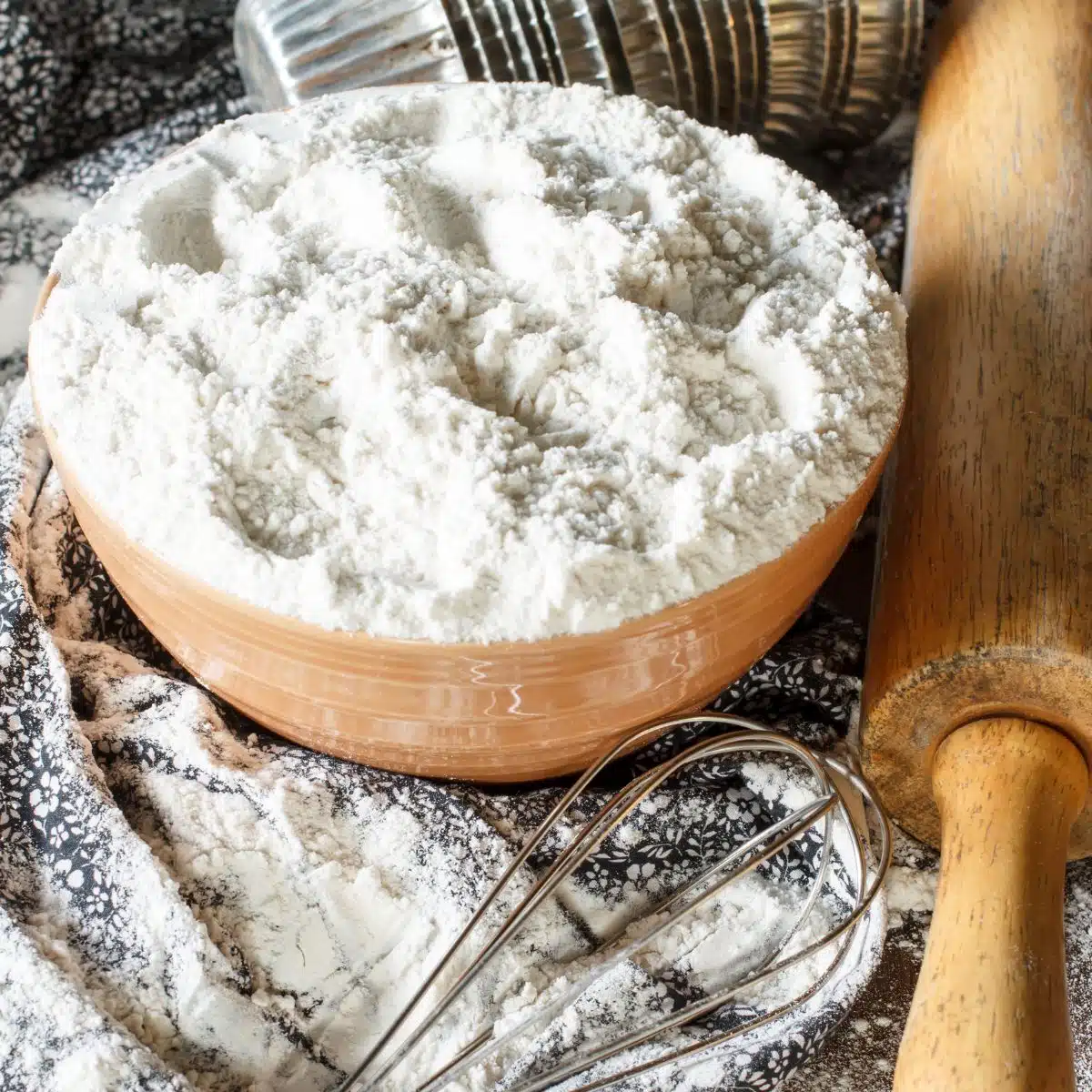
Jump to:
Guide To Homemade Cake Flour
Have you ever been right in the middle of a recipe and noticed that it called for specialty flour (such as cake flour), but you didn't have any on hand? It's not very convenient to stop in the middle of baking to make a quick run to the store.
That's why I'm going to show you how to easily make your own cake flour, using just 2 ingredients that you already have! Plus, it is so much cheaper than that premium price tag at the store!
What Is Cake Flour
Cake flour is a variety of flour that has been milled into a very fine consistency and is low in protein (about 7-9%). As the name suggests, this kind of flour is most commonly used in cakes since it results in a light and fluffy texture!
How Cake Flour Affects Baking
The amount of protein in flour is directly related to gluten formation. When you have a variety of flour that is low in protein, less gluten is formed while you mix together your batter or dough. As a result, you'll have a softer and fluffier consistency in your baked goods.
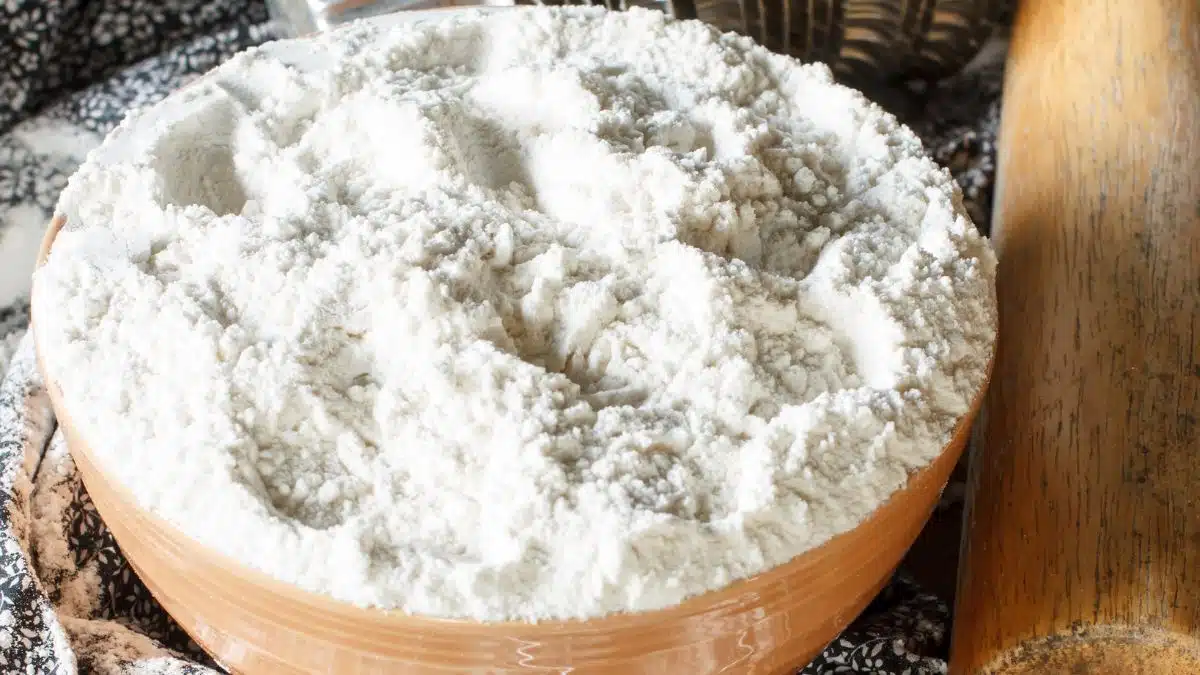
Comparing Different Types of Flour
Here's a quick rundown of some different varieties of flour and what they are best used for.
- Bread Flour: Bread flour is high in protein, ranging from 12-15%. A higher level of protein causes more gluten formation, which results in a texture that is both firm and chewy. Use this flour for things such as bread or bagels.
- All-Purpose Flour: This common flour has a medium level of protein, ranging from 10-12%. It is great for use in a wide variety of things, such as pizza dough or cookies.
- Cake Flour: As discussed above, cake flour is low in protein with a range of 7-9%. It has a soft texture that is ideal for cake and cupcakes.
- Pastry Flour: Pastry flour has slightly more protein than cake flour, ranging from 8-10%. It is best used in things such as pastry dough, pie crusts, and muffins.
- Whole Wheat Flour: Whole wheat flour has a high level of protein at 14%. Of course, this is best used in whole wheat baked goods.
When To Use Cake Flour
You'll want to use cake flour in recipes aiming for an ultra-light and fluffy texture (such as angel food cake). The best rule is to simply follow the recipe and use the flour that is called for.
Ingredients For Homemade Cake Flour
Believe it or not, homemade cake flour only uses 2 ingredients! This is part of the reason why I love to make my own!
- All-Purpose Flour - 14 tablespoons of all-purpose flour. You probably already have this common flour on hand!
- Cornstarch - 2 tablespoons of cornstarch.
How To Make Cake Flour
Making your own cake flour is incredibly easy (and only uses 2 ingredients!) Just make sure you have your measuring utensils, a bowl, and a sifter.
This recipe will make 1 cup of cake flour that can be used in any of your favorite recipes!
- Measure. Add 2 tablespoons of cornstarch into a 1-cup measuring cup, and then add enough all-purpose flour (about 14 tablespoons total) to top it off. Make sure to spoon and level the flour into your measuring cup.
- Sift. Sift the flour and cornstarch mixture TWICE to make sure that the cornstarch is thoroughly incorporated and distributed through the flour.
- Use. Use this cake flour in any of your favorite baking recipes.
Have you ever used cake flour in a recipe before or have you ever made your own? Leave a comment down below, and let me know what you think!
>>>>See all of my recipes here<<<<
❓ Recipe FAQs
Yes, you can use homemade cake flour as a 1:1 substitute in recipes that call for store-bought cake flour. It works well in recipes where a light, tender texture is desired, like cakes and cupcakes.
Homemade cake flour has a lower protein content than all-purpose flour, which results in less gluten formation. This leads to a lighter, softer texture in baked goods, making it ideal for delicate cakes and pastries.
For a gluten-free version, you can substitute all-purpose gluten-free flour for the regular all-purpose flour in the recipe. Keep in mind that the texture and taste might slightly differ from traditional cake flour.
Cornstarch is preferred for its neutral flavor and fine texture. However, if necessary, you can use arrowroot powder or potato starch as substitutes, though they may slightly alter the texture.
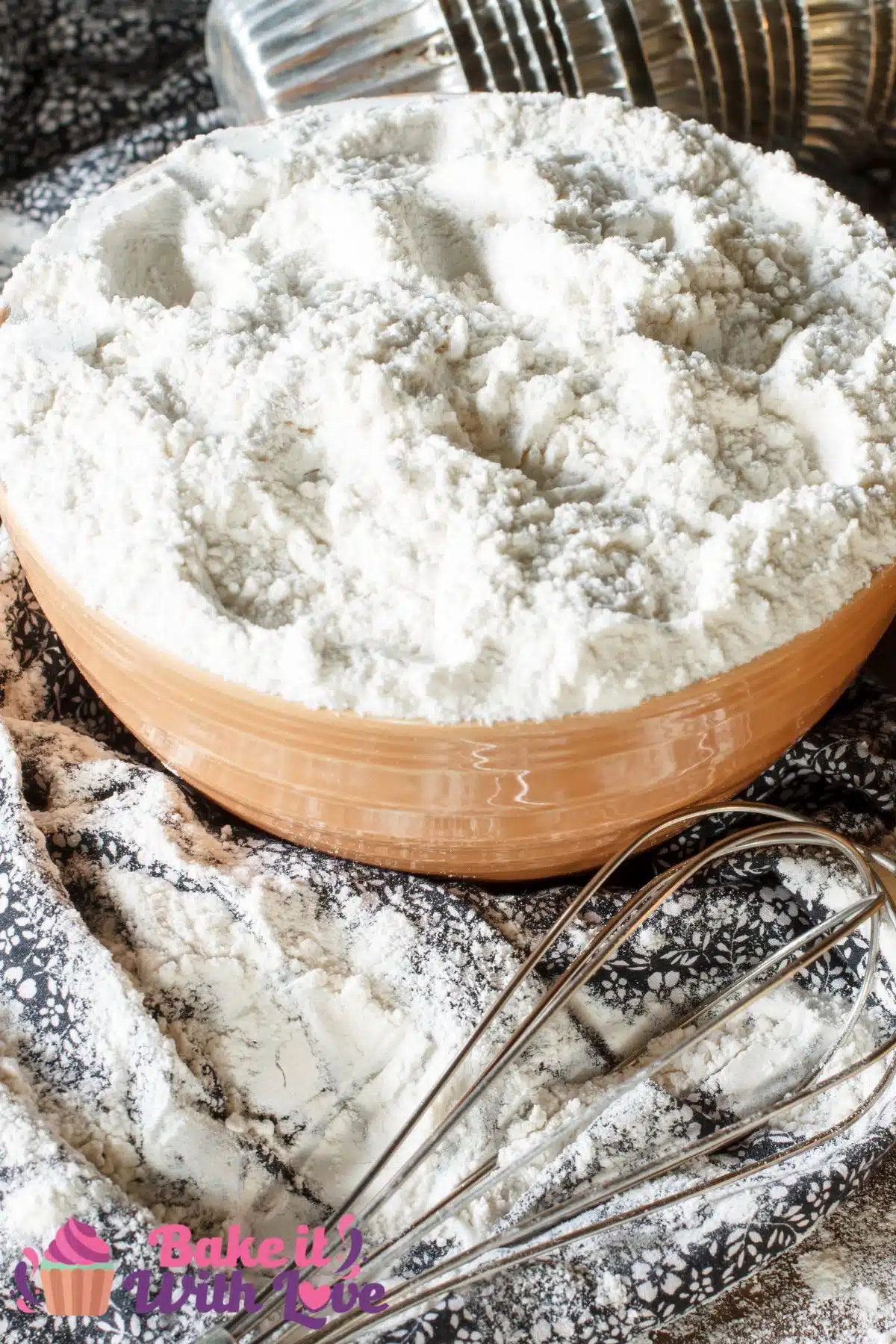
🥣 More Flour Guides
- Almond Flour vs All-Purpose Flour vs Coconut Flour - This handy guide will break down all of the similarities and differences between these types of flour!
- How To Make Bread Flour - Make your own bread flour if you're in a pinch!
- Cups In A Pound Of Flour - Sometimes
- Guide To All-Purpose Flour - This post will show you everything you need to know about this household flour!
- Oat Flour Substitute - If you don't have any oat flour on hand, try out some of these easy substitutes!
- Rice Flour Substitute - These items can easily be swapped out for some rice flour!
Do you love a recipe you tried? Please leave a 5-star 🌟rating in the recipe card below and/or a review in the comments section further down the page.
Stay in touch with me through social media @ Pinterest, Facebook, Instagram, or Twitter! Subscribe to the newsletter today (no spam, I promise)! Don't forget to tag me when you try one of my recipes!
📖 Recipe Card
How To Make Cake Flour: Homemade Cake Flour (An Easy DIY Guide!)
Ingredients
- 2 tablespoon cornstarch
- 14 tablespoon all-purpose flour
(Note: 2x or 3x only changes the ingredient list)
Instructions
- Measure out 2 tablespoons of your cornstarch into a 1 cup dry measuring cup then top if off with your all-purpose flour. Spoon and level the flour into your measuring cup.
- Sift your cornstarch and AP flour combo together TWICE to ensure that the cornstarch is evenly distributed throughout your flour.
- Spoon and level one cup from this mixture to use in your baking recipes.
Notes
- Each serving is 1 cup of homemade cake flour.
- Measure each 1 cup of cake flour individually when your recipe calls for more than 1 cup of cake flour. I've found that this yields better results than combining the ingredients in larger bulk quantities.
- In the UK, you might find cornstarch labeled as corn flour- these are the same thing. However, make sure you aren't using cornmeal as it is a completely different ingredient.
- To store: Make sure to keep your cake flour in an airtight container in a cool, dry, and dark place (such as the pantry or a cabinet).

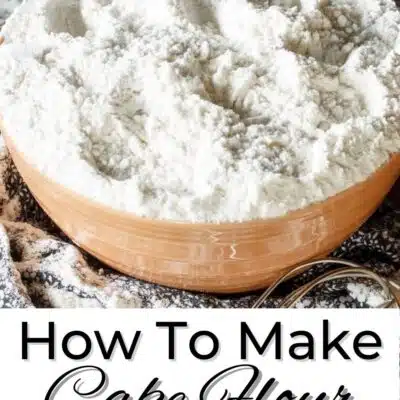
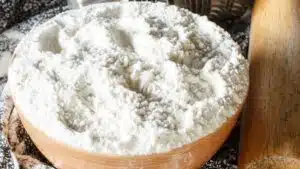
Rhett says
The measures do not make sense. How do you get 14 tablespoons of flour into a 1 cup measure?
Angela Latimer says
There are 16 tablespoons per 1 cup.
Anonymous says
Why not use grams? Wouldn't that be an easier and more precise method of measuring?
Angela @ BakeItWithLove.com says
Of course you can use grams, and for baking it's actually preferred to be more exact when using grams vs cups. However, not everyone uses grams. So the information on the site is presented with US standard cups, and metric conversions available in the recipe card.
Carol Foster says
Can I double or triple the recipe for homemade cake flour to make a larger batch?
Angela @ BakeItWithLove.com says
Yes, you can easily scale up the recipe to make a larger batch. Just maintain the same ratio of all-purpose flour to cornstarch (14 tablespoons of flour to 2 tablespoons of cornstarch per cup).
Jerry says
Any way to convert your recipes to scale? I weigh all my recipes. Thanks
Angela @ BakeItWithLove.com says
All of the recipes have a metric option as well as US customary. You can toggle between them, the button is to the right hand side of the Ingredients heading in the recipe card. Thanks for asking!